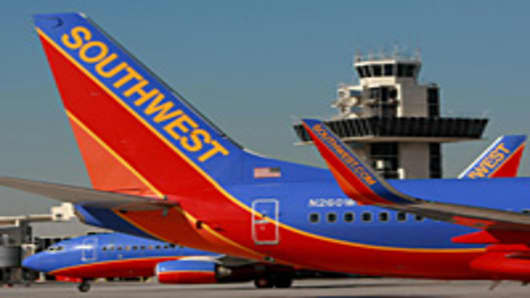Southwest Airlines is known for its low-priced fares and unmatched profitability in the industry—38 profitable years in a row, according to the company.
Part of the profitability comes from Southwest’s ability to get airplanes in and out of the gate faster than its competitors.
“Airplanes only make money in the air,” explained Kevin Frieberg, author of "Nuts! Southwest Airlines’ Crazy Recipe for Business and Personal Success."
In 1972, fledgling Southwest was facing turbulent times. After years of legal battles to gain the right to fly, a lack of funds threatened to ground the company. To meet costs, one of the company’s four planes was sold. Instead of cutting service, Bill Franklin, former Vice President of Ground Operations, and other leaders, calculated three airplanes could do the work of four if the planes were in and out of the gate in 10 minutes.
The birth of the 10-minute turn meant passengers and baggage were unloaded, the plane was cleaned and restocked, and the new passengers got on, all in the set time limit. Considering most airlines took almost an hour to turn a plane, employees, like Dan Johnson an operations agent at William P. Hobby Airport in Houston, thought the plan was up for debate, but Franklin showed he meant business.
“He slammed his hand on the table and bellowed out, ‘If you can’t do it I’ll fire you and keep firing and firing until I find people who can do it,” said Johnson.
Although Franklin may have threatened jobs, he actually saved them. According to Johnson , there was one man whose work was a bit slower. Because all hands were needed to get the plane out of the gate, he remained employed.
Employees figured out how to quickly work together to get the flight airborne in time.
"People felt like they were fighting for their jobs. Other airlines were trying to put us out of business."
Ten-minute turns "were probably desperate,” Johnson said. “People felt like they were fighting for their jobs. Other airlines were trying to put us out of business.”
To accomplish the difficult assignment, Johnson and the other operations agents performed many tasks, including loading and unloading luggage, emptying wastes, taking packages and helping passengers, or “a lot of multi-tasking.”
Even the flight attendants and pilots chipped in by cleaning.
Southwest employees often went beyond their normal duties. According to Frieberg, the pilots volunteered to work the ramps to better understand what rampers do.
"As soon as those passengers were getting on…the flight attendants were assisting… We took the tickets in the air instead of wasting the time trying to do it on the ground,” flight attendant C.J. Bostic recalled.
Pilots were in the cockpit ready to push away from the gate as soon as the last passenger boarded, according to Johnson.
Frieberg described the process from a passenger’s viewpoint: “It’s like there’s nobody anywhere and then all of a sudden everybody comes in like a beehive, going foom, foom, foom…The fueler’s there, the baggage handlers are there. They all just swarm in, bang, and then the next thing you know you’re boarding the aircraft.”
Southwest planes waited for no one, not even co-founder and former chairman Herb Kelleher, as depicted in an early commercial for the airline. In the ad (below), Kelleher is left at the gate when he's late for a Southwest flight.
“The Kelleher ad was real stuff,” said Johnson.
Although Southwest was not always able to turn planes in 10 minutes, the quick turnarounds happened enough to make the policy successful and put Southwest in the black.
Driving sales, customers chose to fly Southwest because the quick turnarounds meant “not sitting on the tarmac unsatisfied,” according to Chris Lauer, author of "Southwest Airlines (Corporations that Changed the World)."
Today, new security regulations and increased carry-on luggage have increased the time before takeoff, according to Brian Lusk, Southwest Corporate Historian. But Southwest still has the fastest average turn time in the industry at just 25 minutes.


